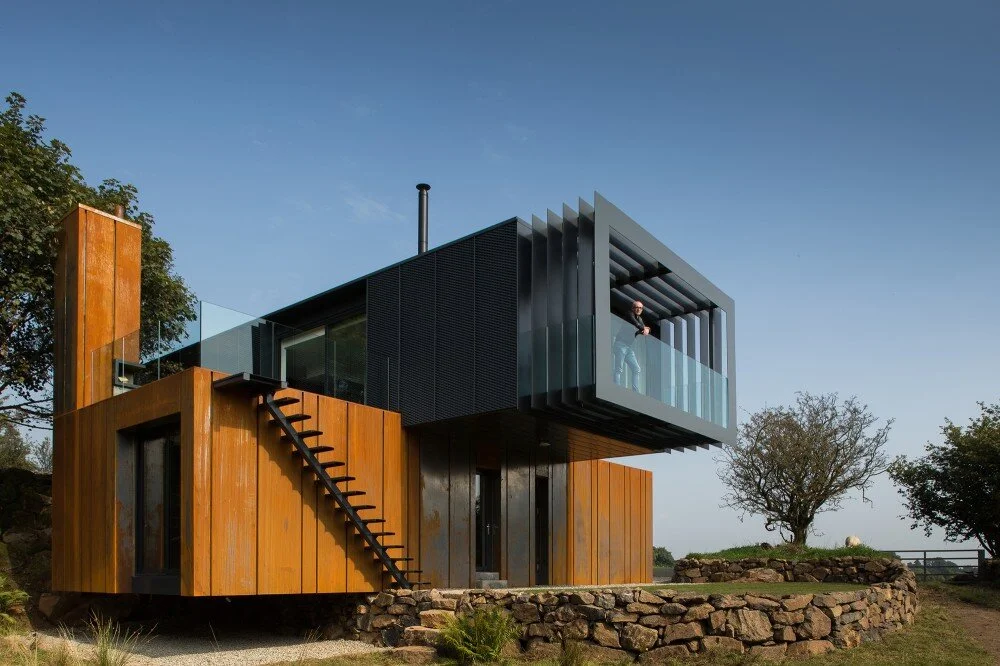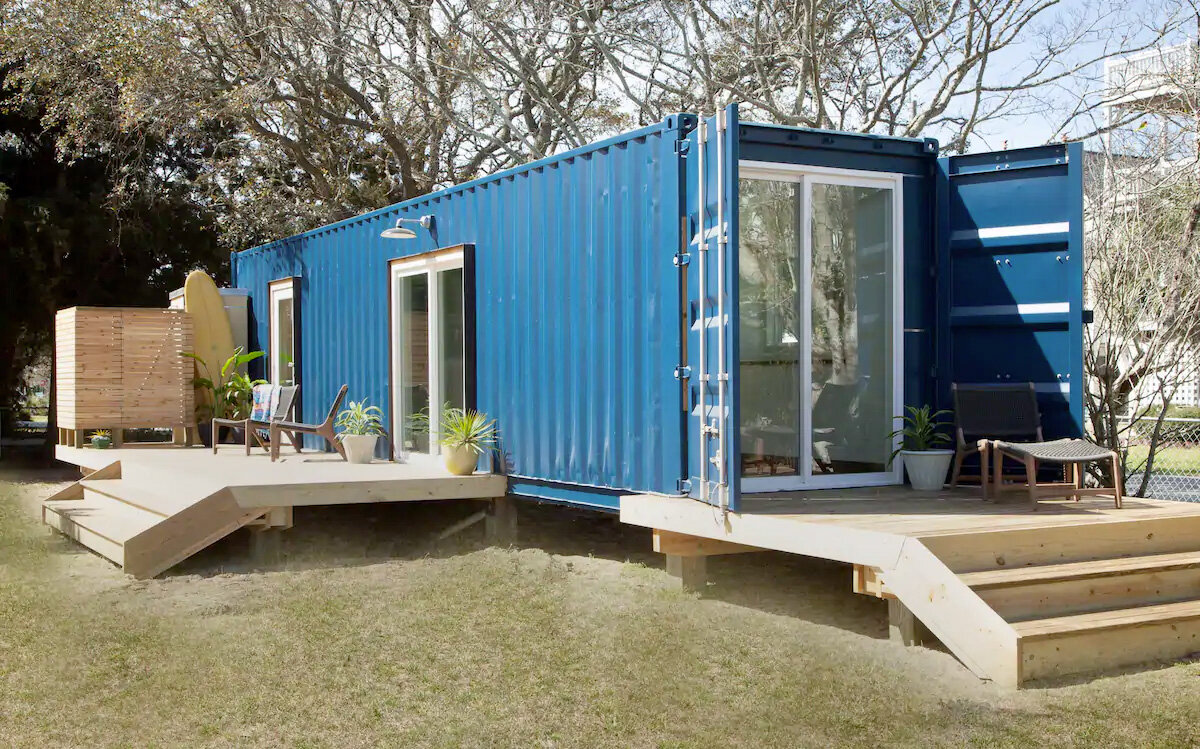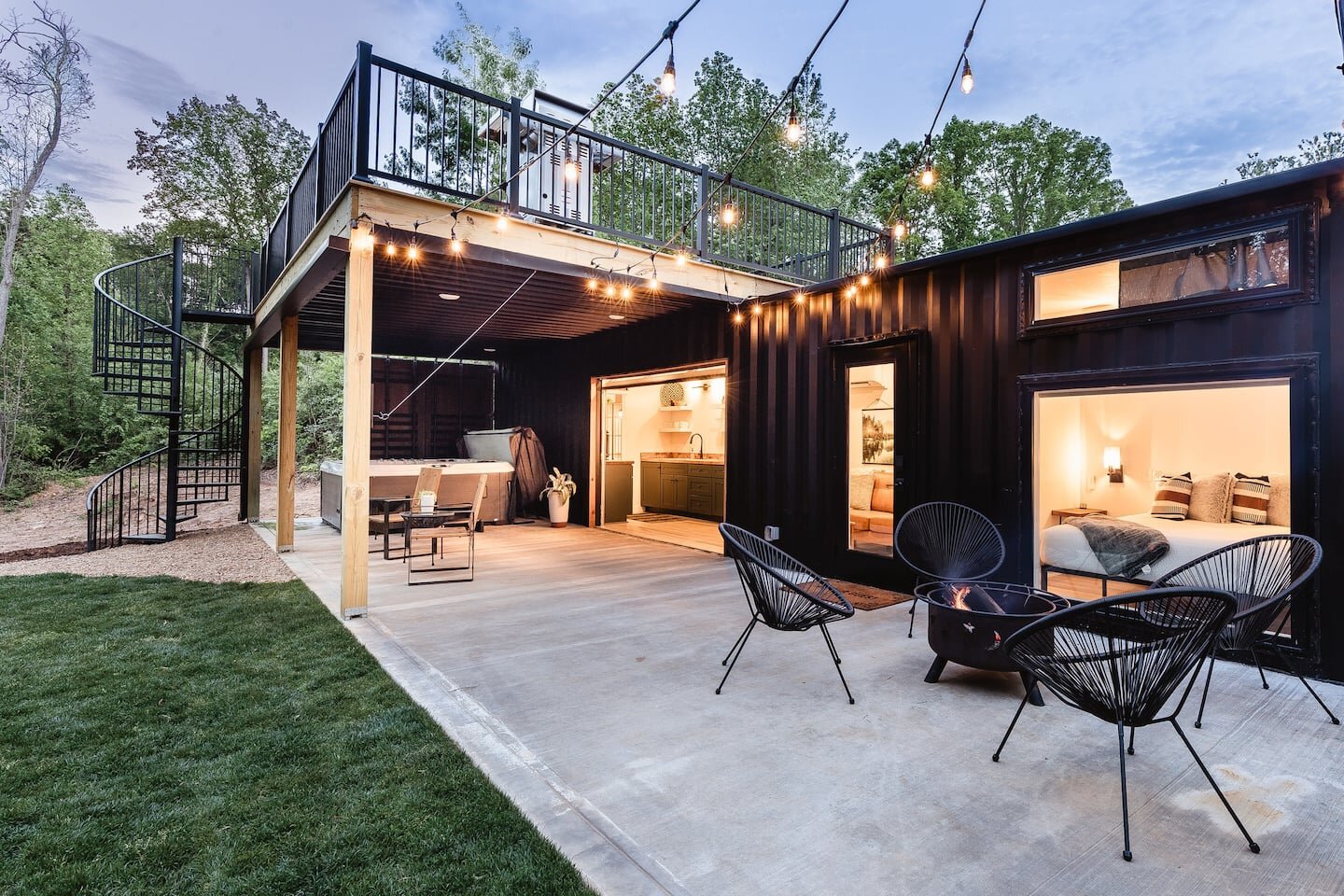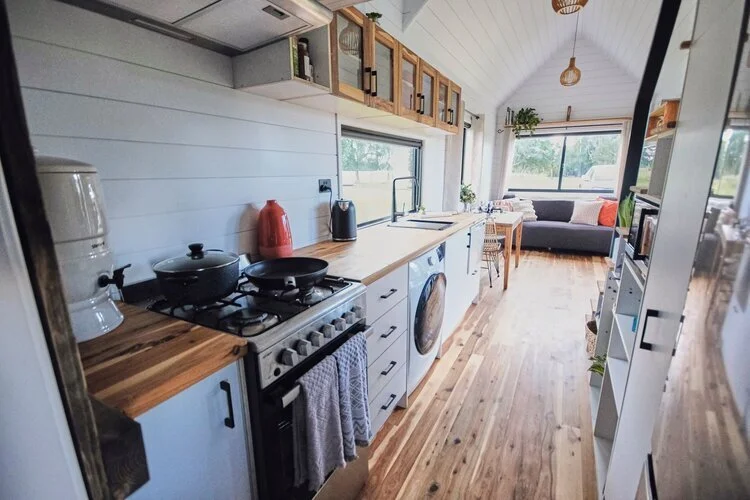Before you buy a shipping Container Home
Shipping containers are robust and have a boxy shape with a distinctive corrugated steel exterior. The humble shipping container has made a big impression on the modern architecture for both residential and commercial buildings. But before you buy a shipping container we want to give you a few pointers - both the good and the bad.
With tens of millions of shipping containers in the world, the urge to reuse and recycle makes perfect sense. People sometimes ask us whether they make a good option for housing. They certainly do have some advantages over tiny houses and other forms of house building.
The 40ft shipping container is the most popular shipping container and most useful size too. That’s 12.19m length x 2.43m wide x 2.59m height with an unladen weight of 3,980kg. Inside the space is 12.03m length x 2.35m wide x 2.59m height 2.39m tall.
Amazing Shipping Container Facts
The first metal shipping container was invented in 1956 by Malcolm McLean and standardised in the 1970’s
Globally, there’s an estimated 40-70 million shipping containers in use, retired or new
Average working life span of 10-12 years
If all the shipping containers in the world were laid end to end they would go around the world more than twice
Every shipping container has a unique unit number
Shipping containers are strong enough to be stacked up to 6 high
Approx 675 shipping containers end up falling into the sea each year
A single 40ft shipping container can hold 8,000 shoe boxes
One of the most reasons people love the idea of converting a shipping container is the sustainable ethos. At the end of its 10-12 life of transporting goods all over the world why not reuse & recycle it? Two of the Häuslein co-founders made their first foray into tiny living by converting a shipping container in country Victoria near Dinner Plains. Read more about our story here.
Shipping containers are ready-made structures popular for secure storage but also big enough to be used as a pop-up shop, a backyard office or even a home, especially in constrained spaces such as backyards or rooftops in built up urban areas.
Containers are strong and robust. If you’re placing a shipping container on a “bush block” a falling tree won’t be too much of a problem.
There’s an estimated 40-70 million shipping containers around the world either in use, new or retired.
Shipping CONTAINER HOMES HAVE SOME drawbacks too
Workable space: The normal ceiling height for a house in Australia is 2.4m, and can often be 2.7 to 3m tall. The ceiling height in a shipping container home starts at 2.39m tall. Then after insulating and lining the walls it’s closer to 2.2m. Unless you stack an extra container on top the ceiling height is restricted.
Refurbishment: Shipping containers have been lifted, transported across the oceans and set down thousands of times in its working life which can bend and twist the sides. Yes, that adds “character” to your home but it also makes the task of getting your shipping container ready to be converted into a liveable space that more difficult.
“Don’t think that it will be cheaper and faster than building a tiny house from scratch”
Häuslein co-founder and lead tiny home designer, Scott Rohdich, cautions that with all the time and costs involved in preparing your shipping container to be fitted out, don't think that it will be cheaper and faster than building a tiny house from scratch. Scott knows this from experience having successfully made both shipping container homes and tiny houses.
Part of the refurbishment process is also to properly insulate the container to keep regulate the heat and have it lined. In this regard, tiny houses can be better insulated from hot and cold conditions.
Transportation: Completely empty, a 40ft shipping container is 3,980kg. Then add all your internals, fixtures and fittings, appliances and so on. Once fully complete, your shipping container home isn’t moving easily.
Health: Every container has unique code so you should be able to track who owned it and where it has been but you’ll not know what it was used to transport. Were there waste products or chemicals transported inside it? Could they have leaked into the plywood floor? Also, each shipping container starts off with a protective paint coating to shield it from saltwater while it was in transit across the ocean. It’s vital for transport cargo, but obviously not so great for people to to live inside as a home.
Lastly, feedback from our customers is that tiny houses look better, less imposing, and less likely to be met with objections from your neighbours.
Shipping container homes and tiny houses have a similar in floor SQM and can be used for similar reasons. This helpful comparison will show you how a shipping container compares to a tiny house on wheels.
SHIPPING CONTAINER
Ideal for short stays or long term living
Transportable only by truck
Heavy 3.980kg tare weight (unladen/empty)
Council approval typically required
Locate almost anywhere a truck can go
24+ sqm living space per 40ft container
Ceiling height capped at 2.2m
House building methods
Refurb needed before construction can begin
Recycling + semi-sustainable ethos
Off grid capability
$20,000 - $200,000+
TINY HOUSE
Ideal for short stays or long term living
Transportable only by powerful 4WD or truck
Heavy (4.5 Tonnes)
No council approval typically required
Locate almost anywhere
20-32 sqm living space
Ceiling height can be tall as 3.6m
House building methods
Built from scratch / no refurbishment needed
Sustainable ethos
Off grid capability
$79,000 - $160,000+
How do people use tiny houses?
Across Australia, there is a tiny revolution in housing that reflects the growing need for sustainability and cheaper choices. There's a wave of individuals and families, opting for a less common path of housing by choosing tiny houses on wheels.
Tiny houses provide people with the opportunity to own their own place, without a huge financial burden, or being tied to a single location for a long time.
Most of our customers, and most tiny house fans in Australia, buy a tiny house to live in as their full time home or use as an alternative to a traditional granny flat building.
People who buy tiny houses are really diverse. Single people, couples, downsizing retirees and even young families with a couple of small children are choosing our larger tiny house models such as the Sojourner or Grand Sojourner to live in as their full time home.
“A beautifully built tiny house feels like a real home.”
Thanks to our clever designs, high quality of craftsmanship, low-to-no council restrictions and affordable price tag our customers experience a huge sense of freedom and welcome relief from a massive 30 year mortgage.
Beautiful real wood kitchen benches and high-end fixtures & finishings make a Häuslein tiny house a luxurious alternative to a shipping container.
For younger people starting out on the real estate ladder a tiny house can provide them with a real stepping stone to traditional property ownership.
The other popular use for our tiny houses is as an income-generating rental on AirBnB. Not only can you become an AirBnb superhost, it can be a great way to meet new people coming to stay on your property. And of course people use tiny houses as their own personal weekend retreat.
Compared to shipping container homes, tiny houses are much easier to transport - both in terms of where you put them and how you get them there - because it is a tiny house on wheels.
Council planning approvals for ShIPPING CONTAINER HOMES
Australia’s 537 local councils are responsible for rates, roads and rubbish and a lot of other things including building approvals.
Any dwelling that is built on or set on a fixed foundation including a shipping container home will need to be approved.
There are no council approvals required when your tiny house is parked on a property where there is an existing dwelling regardless of your property size and street frontage. That’s a big time and cost saving not to mention the hassle saved.
“The Colorbond cladding that we use on Hauslein tiny homes is aesthetically reminiscent of a shipping container.”
This is because tiny houses on wheels (THOW’s) are classified as caravans - not a building on a fixed foundation. The whole tiny house and trailer are fully integrated so can be moved as and when needed.
You can also place a tiny house on a vacant block of land where there is no existing dwelling. However, you are currently subject to some restrictions on how long you live in it and how many nights per year you can rent it out on short term rental platforms such as AirBNB.
If seeking council approval seems like too much hassle, or they have already rejected your plans for a fixed building such as a shipping container home then a tiny house on wheels could be your next best choice.










